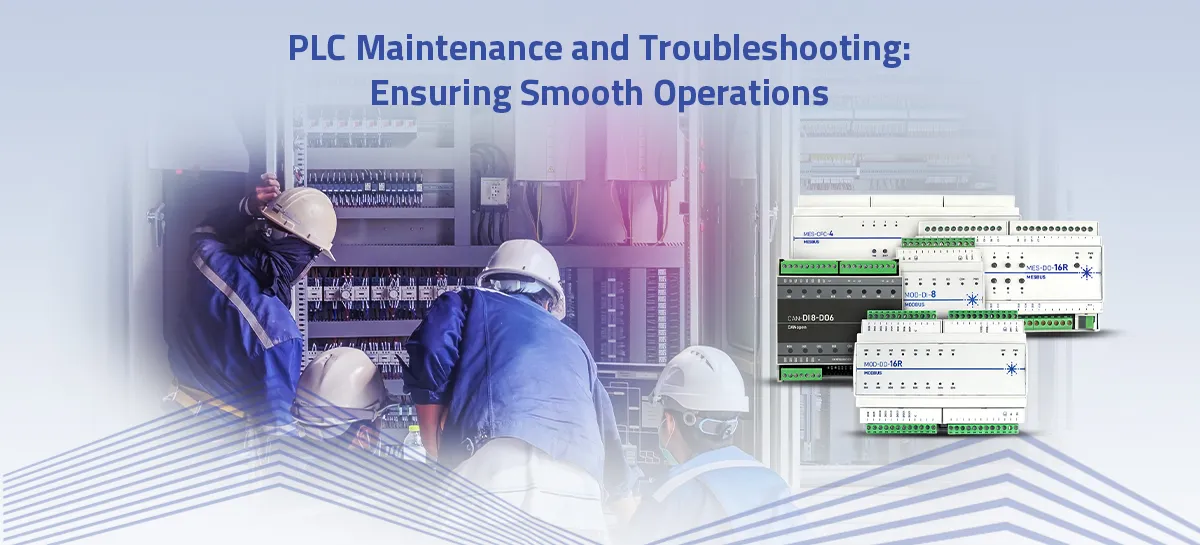
Introduction
In today’s rapidly advancing industrial landscape, automation plays a crucial role in optimizing efficiency and productivity. Programmable Logic Controllers (PLCs) are the backbone of industrial automation, providing precise control and monitoring of various processes. With the complexity of PLC systems, proper maintenance and troubleshooting become paramount to ensure smooth operations. In this blog, we will explore the fundamentals of PLC maintenance and troubleshooting, and why Messung stands out as a trusted partner in this domain.
Understanding PLCs and Their Importance
PLCs are specialized digital computers designed for industrial control applications. They are utilized in diverse industries, including manufacturing, energy, and infrastructure. PLCs perform tasks such as monitoring sensors, controlling machinery, and collecting data, enabling efficient and reliable operations. Messung, a leading industrial automation company, has extensive expertise in the design, implementation, and maintenance of PLC systems. Their commitment to quality and innovation makes them a reliable choice for businesses seeking excellence in automation solutions.
Importance of PLC Maintenance
PLCs should be properly maintained for several reasons:
Preventing Downtime: PLC failures can lead to unexpected downtime, causing delays in production and affecting overall efficiency. Regular maintenance helps identify and address potential issues before they escalate into significant problems, minimizing unplanned downtime.
Ensuring Safety: In industrial settings, PLCs often control critical processes and machinery. Proper maintenance ensures that safety protocols are functioning correctly and that emergency shutdown systems are operational. This helps prevent accidents and ensures the well-being of personnel.
Maximizing Performance: Regular maintenance keeps PLC systems operating at their peak performance. By cleaning components, checking connections, and updating firmware and software, you can optimize the system’s efficiency and responsiveness.
Extending Equipment Lifespan: PLCs are a long-term investment for businesses. Proper maintenance practices, such as cleaning, inspections, and preventive maintenance, can extend the lifespan of PLC components and prevent premature failure. This helps businesses save costs on frequent replacements.
Regular PLC Maintenance Practices
Regular maintenance is essential to prevent unexpected downtime and costly breakdowns. Here are some best practices for PLC maintenance:
Cleaning and Inspections: Dust, debris, and moisture can adversely affect PLC performance. Regularly clean the PLC cabinet, paying attention to cooling fans and vents. Inspect connections, cables, and terminals for signs of wear or corrosion.
Firmware and Software Updates: Keep the PLC’s firmware and software up to date to benefit from performance improvements, bug fixes, and security patches. Ensure compatibility and test updates in a controlled environment before implementation.
Backup and Documentation: Create routine backups of PLC programs and documentation, storing them securely offsite. This practice allows for swift recovery in case of a hardware failure or accidental program loss.
Troubleshooting Common PLC Issues
Even with regular maintenance, PLCs may encounter issues. Here are some common problems and their troubleshooting approaches:
Communication Failures: Check for loose or damaged cables and connectors. Verify network settings and ensure compatibility between devices. Use diagnostic tools to identify communication errors and rectify them.
Faulty Inputs or Outputs: Inspect input/output modules and wiring for loose connections or damaged components. Measure voltages and currents to ensure proper functioning. Replace faulty modules or components when necessary.
Programming Errors: Carefully review the PLC program for logical or syntax errors. Use debugging tools to identify and rectify programming mistakes. Document changes to ensure proper version control.
Advanced Troubleshooting Techniques
For complex issues, it may be necessary to seek professional assistance. Messung’s team of experienced engineers can provide specialized troubleshooting services, such as:
Diagnostic Assessments: Messung employs advanced diagnostic tools to identify complex issues efficiently. Their expertise in analyzing system behavior helps them pinpoint the root cause of problems accurately.
Remote Monitoring: With cutting-edge remote monitoring capabilities, Messung can proactively monitor your PLC system, identifying potential issues before they cause major disruptions. This proactive approach minimizes downtime and optimizes system performance.
Conclusion
Effective PLC maintenance and troubleshooting are essential for maintaining seamless industrial operations. Messung’s extensive experience and comprehensive services make them a trusted partner for businesses seeking reliable automation solutions. By implementing best practices and leveraging advanced troubleshooting techniques, Messung ensures that your PLC systems run at their best, enabling you to focus on your core business and achieve higher productivity and efficiency.
Whether you require routine maintenance or expert troubleshooting, Messung is your go-to partner for PLC solutions. Choose Messung to experience the excellence of their services and unlock the full potential of your automation infrastructure.
